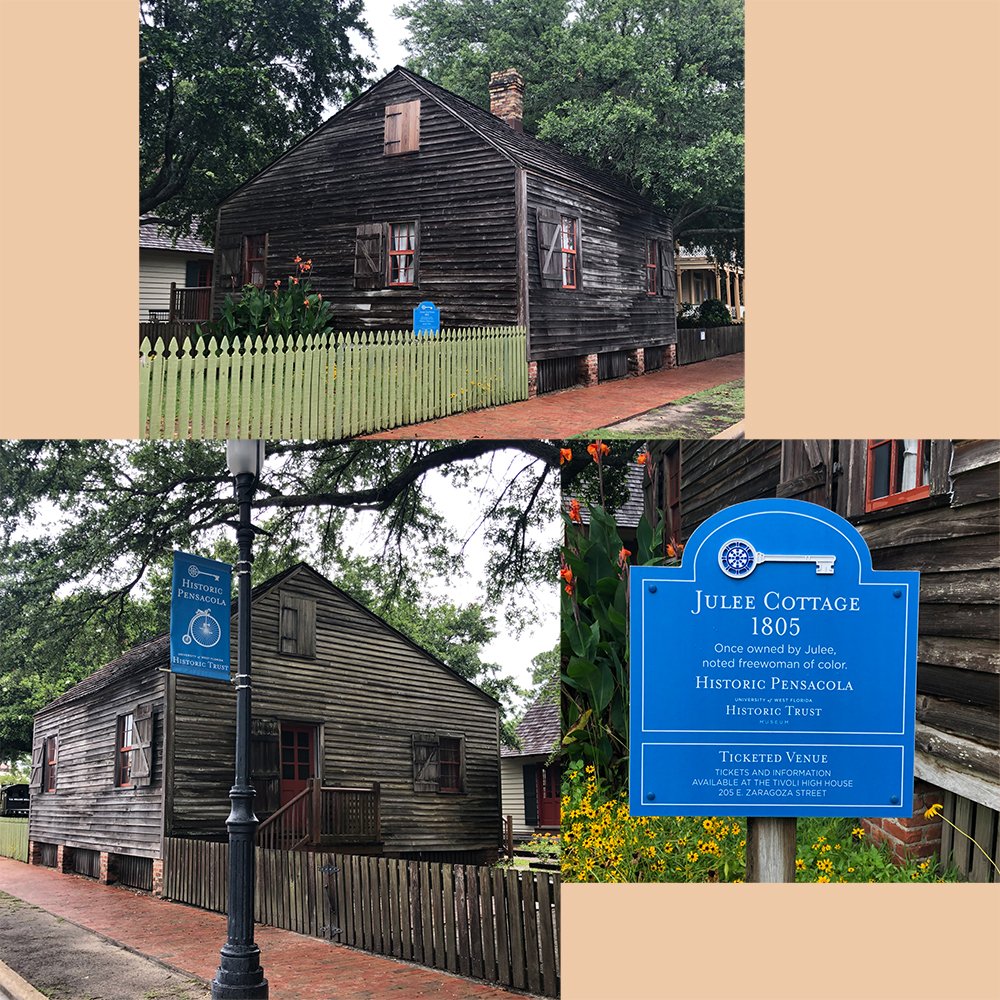Pensacola…the richness of its history is unbounded, and, thus, the topics on which one could write are seemingly endless. In the spirit of the time of the year, I turn my attention to the holiday that helps to keep many a candy company in business—Halloween. As jack-o’-lanterns, witches, and black cats begin making their yearly appearances, the spooky occasion brings with it gangs of excited, costume-clad children roaming the neighborhoods in a sugar-fueled search for their candy loot. (Eh, please, no Tootsie Rolls. Thanks.) And, in historic Pensacola, these ghoulish escapades are accompanied by countless ghost stories! Admittedly, I have never really considered myself to be a part of the ghost-believing crowd; nevertheless, I find the ghost stories with historical roots to be quite fascinating. I’d like to share with you one of my favorites…
Historic Sacred Heart Hospital – Opened in 1915, this large Gothic Revival building served as the first Catholic hospital in Florida. Although hospital operations ceased many years ago, today, historic Sacred Heart Hospital (now called “Tower East”) houses a theater company and several restaurants, including O’Zone Pizza. However, Tower East is not your typical place of business; some believe that theater goers and restaurant patrons are not alone. Indeed, several witnesses attest to seeing ghostly figures adorned in old nurse’s uniforms sauntering down the halls of the massive, history-laden building. And here’s a fun fact—if you’re ever out and about and decide to have a slice and a beer at O’Zone, there are rumors that suggest the old Sacred Heart Hospital morgue was, at one time, located right where you’re dining. Yikes! But, hey, who am I kidding? Have you had a slice of O’Zone pizza? It’s delicious! …I’m cool with dining in a morgue…
This is but one of countless spooky tales of ghostly apparitions or paranormal activity in a Pensacola historical site. As Halloween rapidly approaches, consider taking part in one of the many Haunted House Walking and Trolley Tours in historic Downtown Pensacola.
Here’s an excerpt from the Historic Pensacola Haunted House Walking and Trolley Tours web page:
Join us as we haunt Historic Pensacola on Friday and Saturday, October 19, 25, and 26. There are three walking tour routes to choose from at 7, 7:30, 8, and 8:30 each night including the Adults Only Redlight Walking Tour, the Murder and Mayhem Walking Tour and the Seville Spirits Walking Tour. The Trolley of the Doomed tour explores the ghost stories of North Hill. The trolley tour is at 6:30, 7:30, and 8:30 each night. Costumed guides lead you through the ghost stories of downtown Pensacola on an hour tour of over 450 years of Pensacola’s haunted history.
To learn more or to purchase your tickets, visit that web page — https://www.historicpensacola.org/plan-your-visit/haunted-house-walking-and-trolley-tours/
Happy Halloween!




 As Pensacolians, we have a lot to be proud of. We have a fascinating, rich, and long-lasting history. The 1559 settlement attempts of Don Tristan de Luna y Arrellano put Pensacola on the map as the oldest attempted settlement in what is now the United States. We are the City of Five Flags. We are the Cradle of Naval Aviation. In addition to our history, we have some of the country’s most beautiful beaches. Indeed, the beaches of Pensacola and surrounding areas are awe-inspiring to locals and tourists alike. But controversy looms…
As Pensacolians, we have a lot to be proud of. We have a fascinating, rich, and long-lasting history. The 1559 settlement attempts of Don Tristan de Luna y Arrellano put Pensacola on the map as the oldest attempted settlement in what is now the United States. We are the City of Five Flags. We are the Cradle of Naval Aviation. In addition to our history, we have some of the country’s most beautiful beaches. Indeed, the beaches of Pensacola and surrounding areas are awe-inspiring to locals and tourists alike. But controversy looms…